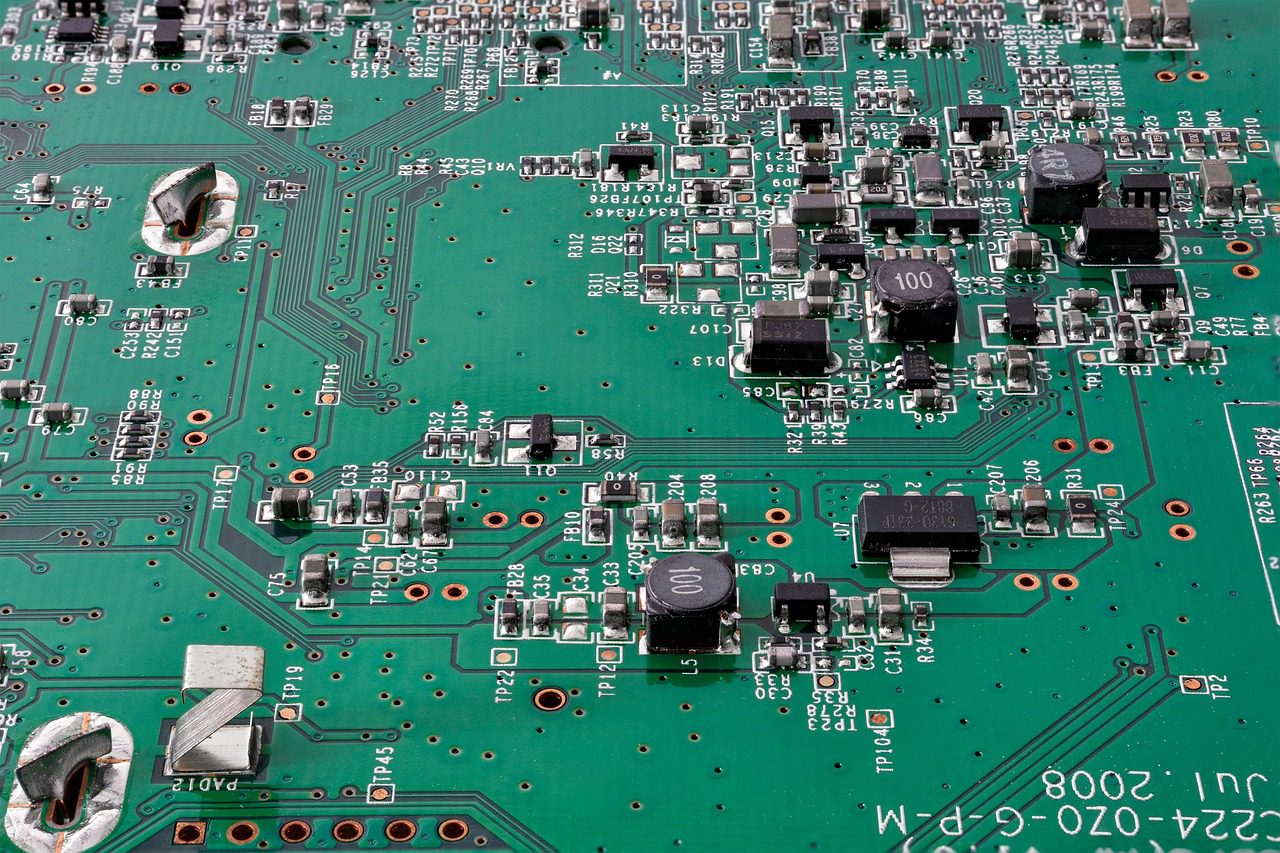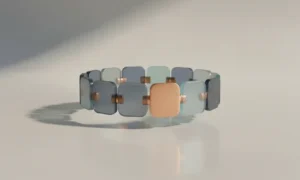Today’s technological landscape has so much big data and constantly increasing computational demands that conventional electronic devices now face limitations in efficiently processing enormous amounts of information. To get past these challenges, researchers continually explore new frontiers in nanoelectronics.
One of the most exciting developments that shows promise is the rise of nano-excitonic transistors. These nanoscale devices harness the unique properties of excitons to potentially revolutionize computing power and address problems found in data processing.
The evolution of transistors has been a fundamental part of the rapid advancement of modern electronics. Transistors serve as the building blocks of integrated circuits that continually become smaller and faster with respect to Moore’s law.
However, as conventional transistor technologies slowly reach their physical limitations, researchers have worked tirelessly to find alternative solutions to continue miniaturization and boost the performance of electronic devices. Nano-excitonic transistors have surfaced as a potential game-changing solution that utilizes excitons for carrying information instead of electrons.
This article will explore how nano-excitonic transistors can provide a novel approach to overcoming data processing bottlenecks, leading to more energy-efficient, high-performance, and faster computing systems.
What are excitons?
Before delving into everything you need to know about nano-excitonic transistors, you must first understand what excitons are. Excitons refer to quasiparticles generated when an electron is excited to a higher energy level through photon absorption that leaves behind a positively charged hole.
The electrostatic force binds the electron and the hole together to form an exciton. This combined state enables the excitons to act as particles with distinct properties that differ from those of free electrons.
The most notable quality of excitons is their ability to carry charge and energy without dissipating much heat.
Understanding the Basics of Nano-Excitonic Transistors
Nano-excitonic transistors are an innovative class of nanoelectronic devices that merge nanotechnology with excitonic phenomena. As mentioned, excitons are quasiparticles generated from an electron that absorbs a photon and leaves a positively charged hole.
These excitons play a critical role in these nanoelectronic devices. In nano-excitonic transistors, you can control the flow of charge carriers through the device. That novel approach can surpass traditional electronic devices’ performance and efficiency.
Nano-excitonic transistors use the properties of excitons to generate a completely new paradigm for processing information. Traditional transistors rely on the actions of electrons through semiconductor materials that result in heat generation and resistive losses, which limit their efficiency and speed.
By comparison, excitonic transistors leverage the ability of excitons to move through semiconductor materials without causing significant heat loss. This fact makes excitonic transistors potentially faster and more energy efficient than their electron-based counterparts.
The core components of a nano-excitonic transistor include a channel, an exciton detector, and an exciton generator. The exciton generator produces excitons while the channel delivers the quasiparticles to the exciton detector. The exciton detector is where the information is read and further processed.
The Challenges with Conventional Transistors
To fully appreciate the benefits of nano-excitonic transistors, it is crucial to understand the limitations of conventional transistors. For several decades, conventional transistors have served as the foundation for modern electronics, enabling astonishing technological advancements.
However, as electronic devices shrink and data processing demands for higher performance grow, conventional silicon-based transistors face many challenges that impede further development. These challenges include heat generation, physical scaling limitations, and power consumption.
The quest for more energy-efficient and smaller transistors described by Moore’s Law is slowly creeping toward its practical limits, which searches for an alternative solution increasingly pressing. Nano-excitonic solutions provide a novel approach that will address some of these challenges by presenting exciting opportunities for the future of electronics.
Here are some challenges with today’s conventional transistors and how nano-excitonic transistors can provide potential solutions.
Heat generation and energy efficiency
With conventional transistors continuing to shrink in size and operating at higher frequencies comes increased resistive losses that result in significant heat generation. The heat generated raises thermal management challenges and reduces electronic devices’ overall energy efficiency.
Heat dissipation becomes a critical issue, often leading to a device malfunctioning or even failing.
Nano-excitonic transistors harness the unique properties of excitons that carry energy and charge with minimal heat dissipation. As a result, these transistors could potentially offer significantly higher energy efficiency compared to conventional transistors.
By reducing the overall heat generation during information processing, nano-excitonic transistors could lead to further power-efficiency improvements in devices with extended battery life.
Speed limitations
Because conventional transistors have continued shrinking, they can operate at higher clock speeds, enabling faster data processing. However, electron scattering and quantum effects become more pronounced at excessively small scales, leading to speed limitations.
These challenges hinder further boosts in the operating speed of conventional transistors.
With nano-exciton transistors, the unique characteristics of excitons enable faster transport of information compared to electrons. Excitons can move through semiconductor materials with decreased scattering, potentially overcoming the speed limitations and enabling higher data transfer rates than conventional transistors.
Quantum tunneling
Conventional transistors approaching nanoscale dimensions pose significant concerns regarding quantum tunneling.
At such small scales, electrons have the means to tunnel through the barriers in the transistor, which leads to unwanted leakage currents. This incident undermines the precise control of transistor behavior, which causes increased power consumption and performance degradation.
Nano-excitonic transistors may provide a solution for quantum tunneling problems. Compared to individual electrons, the behavior of excitons is less prone to quantum tunneling, potentially allowing enhanced control over charge transport and reducing leakage currents.
Material compatibility
The size reduction of transistors has made choosing semiconductor materials more critical than ever. That is because not all materials are compatible with nanoscale transistors, leading to considerable constraints on device manufacturability and performance.
To this day, researchers are still searching for suitable materials for nano-excitonic transistors. However, they also delved into various semiconductor materials that can efficiently create and transport excitons.
Finding suitable materials is critical for optimizing the performance of nano-excitonic transistors and ensuring their successful integration into practical electronic devices.
Scaling and integration
Because conventional transistor technologies are reaching physical scaling limits, future miniaturization becomes progressively more challenging. Furthermore, integrating billions of transistors into complex circuits requires sophisticated fabrication techniques that raise process complexity and production costs.
Nano-excitonic transistors possess the potential for more straightforward integration and scale. Their unique properties may enable the production of smaller devices that push the boundaries of miniaturization in electronics. However, difficulties concerning fabrication techniques and precise control must be overcome to facilitate seamless integration with existing technologies.

Other Advantages of Nano-Excitonic Transistors
Aside from the solutions mentioned, nano-excitonic transistors also possess advantages over conventional transistors, making them a promising candidate for the newest generation of electronic devices. These advantages include miniaturization, quantum computing potential, enhanced sensing and imaging, and biomedical applications.
Quantum computing potential
Excitons exhibit quantum properties that enable nano-excitonic transistors to create a path for advancements in quantum computing. Quantum computing relies heavily on the principles of superposition and entanglement, which allow parallel processing and solve complex issues remarkably faster than traditional computers.
By leveraging the unique quantum behavior of excitons, nano-exciton transistors provide the potential to develop more efficient and stable quantum computing architectures.
Miniaturization
The ability of excitons to transfer information without significant scatter shows an advantage in miniaturization. Nano-excitonic transistors have the potential to be produced at a smaller scale compared to conventional transistors, which enables the development of more compact electronic devices.
This miniaturization creates fresh opportunities for wearable electronics and innovative applications, where form and size factors are critical considerations.
Enhanced sensing and imaging
Nano-excitonic transistors have the means to enhance imaging and sensing devices. Their ability to generate less heat and carry energy efficiently could result in the development of more accurate and sensitive sensors.
These advancements in sensing and imaging would be most beneficial in environmental monitoring, security systems, and medical diagnostics. Additionally, improved imaging devices with higher energy efficiency could provide more detailed imaging results and higher resolution.
Nano-excitonic transistors have the potential to significantly impact search engines and the broader field of information retrieval and processing. For example, if you search for “how to get personal injury clients,” you will find significantly more and better results related to personal injury law than usual.
Biocompatibility and biomedical applications
Excitons are known to have interactions with biological systems that make nano-excitonic transistors potentially viable for biomedical applications. These transistors could enable the development of biocompatible devices for implantable sensors, diagnostic tools, and monitoring biological processes.
This advantage opens the door to exciting possibilities for biomedical research and the healthcare industry.
Environmental impact
Because nano-excitonic transistors have better energy efficiency than conventional transistors, they can also potentially massively reduce the overall energy consumption of electronic devices. It can contribute to a lower environmental impact and more sustainable technological advancement.
Smaller Devices Equal Bigger Futures
As mentioned, nano-excitonic transistors represent a hopeful new avenue that addresses data processing issues plaguing traditional electronic devices. Their unique properties enable lower power consumption, the potential to harness quantum effects, enhanced speed, and high-density integration.
While there are many challenges to overcome, the research and development of non-excitonic transistors provide exciting opportunities to advance computing technology and discover new data processing capabilities. As engineers and scientists continue to work tirelessly and explore the potential applications for nano-excitonic transistors, the future of electronic devices looks brighter than ever.



































